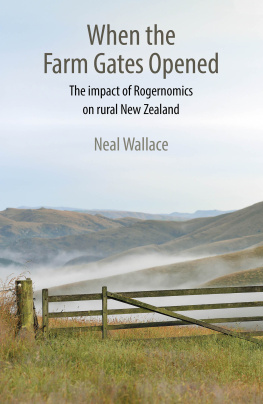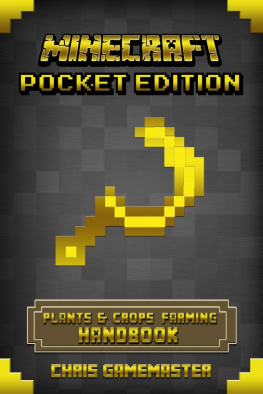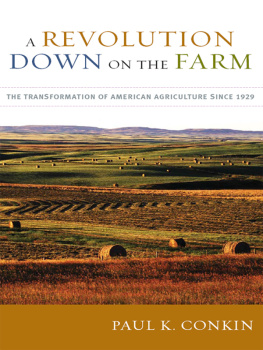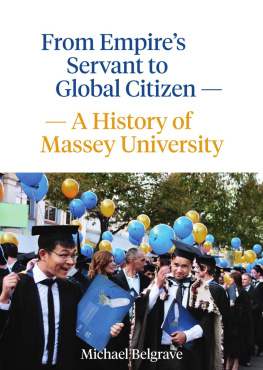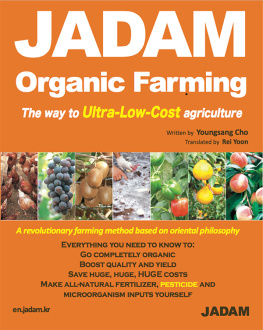Farming Inside Invisible Worlds
Contemporary Food Studies: Economy, Culture and Politics
Series Editors: David Goodman and Michael K. Goodman
ISSN: 20581807
This interdisciplinary series represents a significant step toward unifying the study, teaching, and research of food studies across the social sciences. The series features authoritative appraisals of core themes, debates and emerging research, written by leading scholars in the field. Each title offers a jargon-free introduction to upper-level undergraduate and postgraduate students in the social sciences and humanities.
Kate Cairns and Jose Johnston, Food and Femininity
Peter Jackson, Anxious Appetites: Food and Consumer Culture
Philip H. Howard, Concentration and Power in the Food System: Who Controls What We Eat?
Terry Marsden, Agri-Food and Rural Development: Sustainable Place-Making
Emma-Jayne Abbots, The Agency of Eating: Mediation, Food, and the Body
Henry Buller & Emma Roe, Food and Animal Welfare
This book is dedicated to Tom Atchison and Leigh Campbell.
One farm, two generations, two ontologies.
Great powers are the subject of this book and they deserve acknowledgement. I acknowledge the power of our land Aotearoa New Zealand and all the things it makes possible. I acknowledge the successive waves of our ancestors who arrived here over the last thousand years and turned an unknown land into a home. I also acknowledge the many and various places where our land and our ancestors formed farming partnerships for better or for worse.
This book was a work of collaboration, kinship and friendship. The intellectual ideas that informed most of the central ideas in this narrative were developed over many years with a diverse group of fellow travellers.
The emergence of new, critical approaches to agricultural change consolidated in Australasia around the activities of the Agrifood Research Network. I owe a large debt to the founding leaders of that network including Geoff Lawrence, David Burch and Roy Rickson, along with many of the members of that group who have become both academic collaborators and friends over the last two decades particularly Carolyn Morris, Jane Dixon and Bill Pritchard.
The Biological Economies group has been foundational to my re-evaluation of the ontologies of my academic and farming worlds. I am grateful for the tireless energy of Richard Le Heron, the barn-burning theoretical experimentation of Nick Lewis, Chris Rosin, Katharine Legun and Matt Henry, and the affability and discipline of Eric Pawson, Mike Roche and Harvey Perkins.
Much of the work in this book is drawn from a series of research projects about the emergence of alternative agriculture in Aotearoa New Zealand. I would like to acknowledge my co-leaders and key interlocutors in the Greening Food, ARGOS and NZ Sustainability Dashboard projects, in particular John Fairweather, Jon Manhire, Caroline Saunders, Henrik Moller, John Reid, Lesley Hunt and Paul Dalziel. As well, the Empires of Grass team led by Tom Brooking and Eric Pawson has done much to open up new vistas in New Zealand history; without their work this book would have been impossible to conceptualize.
The Centre for Sustainability at the University of Otago has provided academic inspiration and collaboration. Its director Janet Stephenson and administrative staff Nicki Topliss and Gwenda Crawford have made the Centre a unique and supportive place to work. I also wish to thank the numerous postdoctoral fellows and postgraduate students who have passed through the Centre, especially my long-time collaborator Chris Rosin who drove many of the theoretical innovations that began to shape our collaborative work over the last fifteen years. As well, Ruth Fitzgerald, Carmen McLeod, Annie Stuart, Angga Dwiartama, Cinzia Piatti, Maddie Hall, Karly Burch, David Reynolds and Abbi Virens made their mark on elements of this book; Paul Stock and Jeremie Forney introduced me to food utopias, assemblages and the importance of generosity in all academic dealings; and Julia Haggerty brought new insights into land and environment in Aotearoa New Zealand, and has made Montana our second home.
Many of my academic friends have read chapter drafts and given superb feedback. I am indebted to Anne Murcott and Geoff Lawrence for being the first readers of every draft and for their support over many years leading up to the commencement of this project; Eric Pawson, for carefully reading every chapter and encouraging both a serious engagement with environmental history and an equal engagement with contemporary legacies of that history; Richard Le Heron, Chris Rosin and Nick Lewis for their insightful commentary on ontology and assemblages; Julia Haggerty for tuning up my ideas about frontiers; Tom Brooking for advice on key historical sections; and Chris Perley for his commentary on new ways to farm (and for putting me in touch with Don Miller who shared his personal collection of photographs of hillside erosion after Cyclone Bola).
I also thank my editors at Bloomsbury, Lucy Carroll and Lily McMahon and my series editors, Mike Goodman and David Goodman, for their unfailing support and encouragement. I also want to thank Imogen Coxhead and Les ONeill for their expert editorial and map-making assistance.
I would like to thank the various organizations that contributed to allowing this book to be published under an open access agreement. The Division of Humanities and the Centre for Sustainability at the University of Otago, and Ruralis (Institute for Rural and Regional Research) in Norway, all made a contribution to this goal and I am very grateful for their support.
Many other friends and colleagues have provided insights that informed aspects of this book at conferences, on field trips or fishing trips, over shared meals and various adventures. Thanks to David Craig, Jane Higgins, James Hale, Sean Connelly, John Stenhouse, Helen Leach, Ian Frazer, Alison Loveridge, Anne Pomeroy, David Rice, Stephen Horton, Scott Willis, Jenna Packer, Mike Hirst, John Dawson, Tony Ballantyne, Kate White, Sue Wards, Morgan Williams, Michael Bell, Michael Carolan, Julie Guthman, Hannah Gosnell, Harriet Friedmann, Philip McMichael, David Evans, Bruce Muirhead, Michael Burgess, and my Norwegian colleagues and friends at Ruralis in particular Reidar Almas, Hilde Bjorkhaug and Rob Burton.
I have also relied extensively on a host of amateur historians and genealogists in my wider family. The Campbell story at Ashburn and Glenn Rd was meticulously researched by Dawn Isles. Research into the Bailey and Roberts families and farms was informed by Kristin Wickens. The remarkable adventures of Dennett Heather and his two families have been a long-time passion of Shirley Heather, Bruce Heather, Peter Wakeman and Alison and Jo Mewett. Unaiki Te Watarauhi came to life thanks to the work of Marri Pureu and William Kainana Cuthers, and the three of us benefitted greatly from Anaru Eketones advice about the history of Ngti Tamainupo. While my kinfolk have often debated long and hard about various aspects of these histories, I take sole responsibility for the particular way in which I have come to understand and characterize them.
Much of the work in this book draws on the insights and practices of farm families in Aotearoa New Zealand. During the last twenty-five years of researching hundreds of farms and orchards, I have learnt about the great variety of ways to pursue futures for farming. One of my most difficult tasks was choosing a tiny fraction of this group as case studies to illustrate this narrative. I appreciate the cooperation and assistance of all these families.


